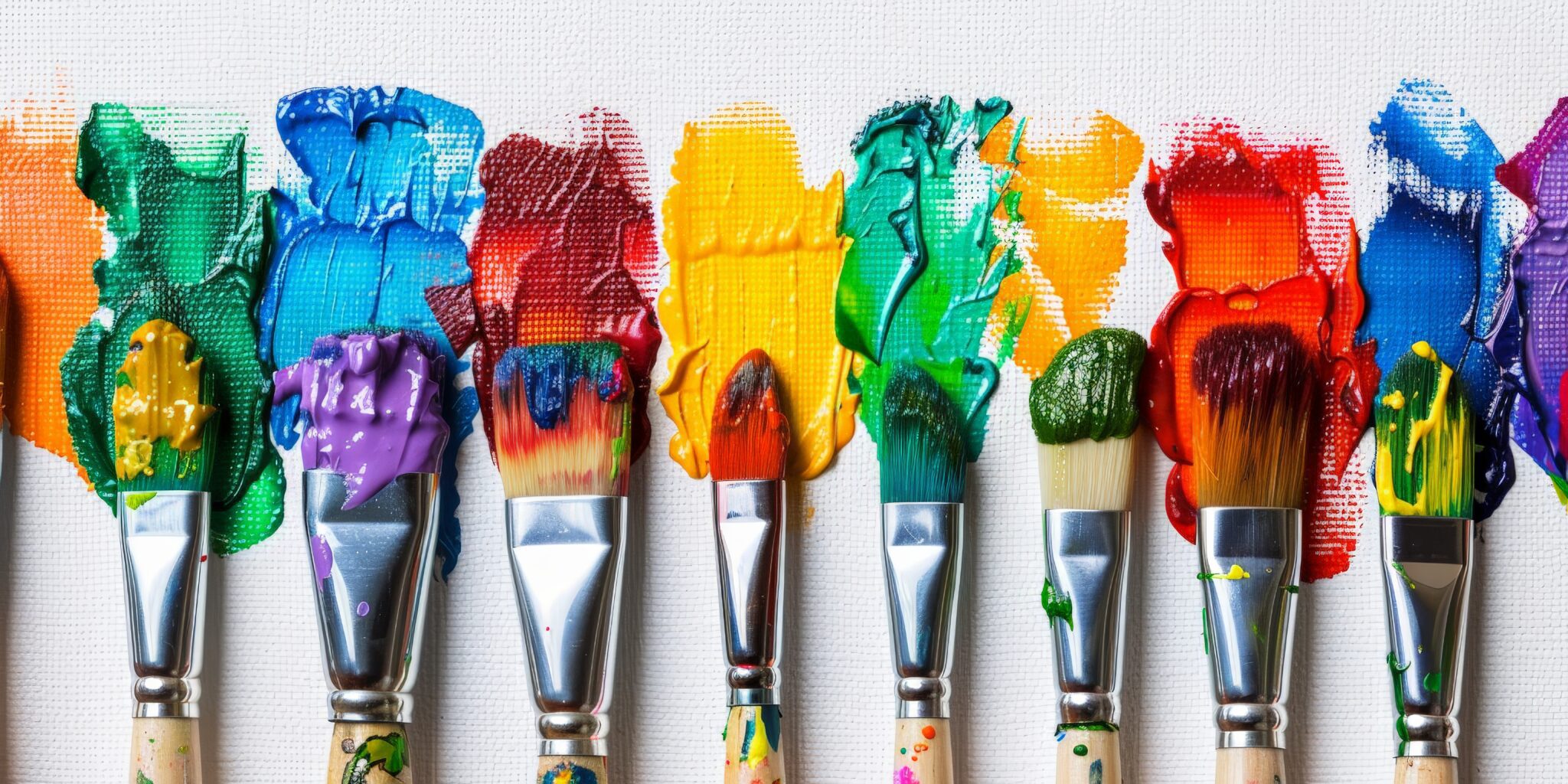As artists delve into the world of acrylic painting, the right tools can significantly impact the quality and outcome of their artwork. Specialty brushes, in particular, offer unique capabilities that traditional brushes may not provide. In this blog post, we’ll explore the top five specialty brushes for acrylic painting and their best uses, enabling you to enhance your artistic repertoire and bring your creative vision to life.
1. Fan Brush: Ideal for Texture and Detail
What is a Fan Brush?
A fan brush features bristles that are arranged in a flat, fan-like shape. This structure allows for unique textures and strokes that are invaluable in landscape painting and other creative expressions.
Best Uses:
- Foliage and Grass: The fan shape is perfect for creating natural-looking leaves, grass, and shrubbery. Each dabbing motion simulates the irregular patterns of foliage effortlessly.
- Cloud Effects: When used lightly with a stippling technique, a fan brush can create soft cloud formations in the sky. By applying white or gray paint to a blue background, you can achieve realistic cloud textures.
- Textured Backgrounds: You can use a fan brush to apply paint in a quick, loose manner, allowing for dynamic brushwork across the canvas.
Tips for Using a Fan Brush:
- Load Properly: Dip the tips of the bristles into the paint. You don’t need to overload the brush; a little paint goes a long way.
- Experiment with Pressure: Varying the pressure applied while painting can produce different textures—light dabbing yields soft edges, while firmer pressure creates more defined shapes.
2. Angular Brush: Versatile and Precise
What is an Angular Brush?
Angular brushes have bristles arranged at an angle, which allows for versatility in capturing edges and corners.
Best Uses:
- Sharp Edges and Corners: The unique shape is especially effective for painting sharp lines and defining shapes, making it great for architectural elements in your landscapes.
- Blending Backgrounds: You can use an angular brush to blend colors where land meets sky, enhancing those transitions with ease.
- Foliage and Details: The slanted bristles enable you to create leaf shapes and blend them seamlessly into the rest of the painting.
Tips for Using an Angular Brush:
- Angle Matters: Hold the brush at the designed angle to take full advantage of its shape.
- Work on Edges: Use the corner of the brush to navigate along edges, giving you great precision.
3. Liner Brush: Perfect for Fine Details
What is a Liner Brush?
A liner brush features long, thin bristles designed specifically for detailed line work and fine details.
Best Uses:
- Delicate Lines: The thin shape is ideal for painting intricate details such as the veins in leaves, fine grasses, or the delicate branches of trees.
- Complex Patterns and Outlining: A liner brush can be used effectively to outline shapes or create intricate designs, enhancing the overall composition.
- Blending Small Areas: The thin bristles can navigate small spaces, allowing for controlled blending and transitions in details.
Tips for Using a Liner Brush:
- Load Carefully: Use a fluid acrylic paint or thin your paint for better flow through the bristles.
- Steady Your Hand: Practice steady strokes to create smooth lines. If needed, rest your hand on the canvas for control.
4. Round Brush: Classic and Versatile
What is a Round Brush?
Round brushes come with a tapered, pointed tip, making them ideal for diverse applications and versatile painting styles.
Best Uses:
- General Purpose: A round brush can handle everything from broad strokes to fine details. It’s perfect for layering colors and blending smoothly.
- Creating Soft Edges: If you’re painting softer transitions—like in the skies or the merging of landscape elements—round brushes work wonderfully.
- Vibrant Flowers: Use a round brush when painting flowers or other organic shapes. The circular strokes help create the natural look of petals and blooms.
Tips for Using a Round Brush:
- Vary Pressure: Use light pressure for fine details and increase pressure for broader strokes.
- Practice Bristle Control: Get accustomed to the feel of the brush; its flexibility allows for diverse techniques.
5. Palette Knife: For Texture and Palette Management
What is a Palette Knife?
Although not a brush in the traditional sense, palette knives are essential tools for creating special effects in acrylic painting. They have a flexible metal blade with a blunt edge.
Best Uses:
- Impasto Techniques: Apply thick layers of paint directly onto the canvas using a palette knife to achieve texture. This technique adds dimension and physical presence to your artwork.
- Mixing Colors: Palette knives excel in mixing paint on your palette, helping you create unique color blends before applying them to the canvas.
- Scraping and Removing Paint: The edge of a palette knife can also be used to scrape away paint or make corrections, allowing for an exploration of negative space.
Tips for Using a Palette Knife:
- Use as a Brush: Try applying paint with the knife’s blade to create broad, sweeping strokes or textures not achievable with a brush.
- Experiment with Techniques: Use the knife to create interesting effects by applying paint in various thicknesses and directions.
Conclusion: Finding the Right Specialty Brush for Your Needs
Choosing the right specialty brush for acrylic painting can elevate your artwork by providing dynamic textures, precise details, and the ability to execute various techniques. Understanding the uses, advantages, and best practices for each brush type can enhance your creative process and final piece.
At Urart Studio, we encourage artists at all levels to explore new tools and techniques. Be sure to browse our diverse selection of brushes and art supplies at urartstudio.com/shop. For more insightful tips, explore our painting tips at urartstudio.com/painting-tips and step-by-step painting instructions at urartstudio.com/step-by-step-painting-instructions. Let’s embark on this artistic journey together!
Keywords: specialty brushes, acrylic painting techniques, texture creation, brush types, fine details, painting tips.
#SpecialtyBrushes, #AcrylicPaintingTechniques, #TextureCreation, #BrushTypes, #FineDetails, #PaintingTips



Leave a Reply
You must be logged in to post a comment.